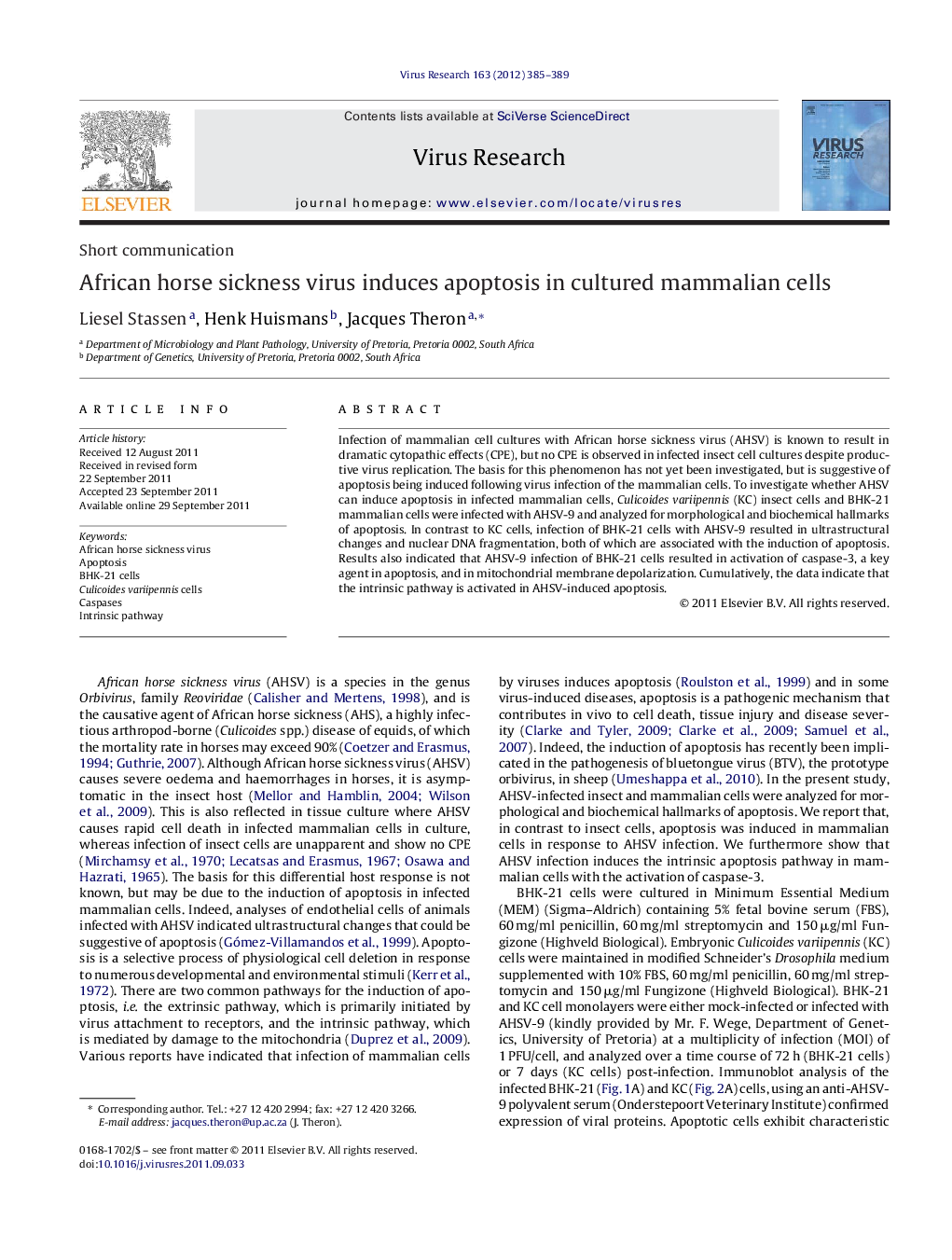| Article ID | Journal | Published Year | Pages | File Type |
|---|---|---|---|---|
| 6143325 | Virus Research | 2012 | 5 Pages |
Infection of mammalian cell cultures with African horse sickness virus (AHSV) is known to result in dramatic cytopathic effects (CPE), but no CPE is observed in infected insect cell cultures despite productive virus replication. The basis for this phenomenon has not yet been investigated, but is suggestive of apoptosis being induced following virus infection of the mammalian cells. To investigate whether AHSV can induce apoptosis in infected mammalian cells, Culicoides variipennis (KC) insect cells and BHK-21 mammalian cells were infected with AHSV-9 and analyzed for morphological and biochemical hallmarks of apoptosis. In contrast to KC cells, infection of BHK-21 cells with AHSV-9 resulted in ultrastructural changes and nuclear DNA fragmentation, both of which are associated with the induction of apoptosis. Results also indicated that AHSV-9 infection of BHK-21 cells resulted in activation of caspase-3, a key agent in apoptosis, and in mitochondrial membrane depolarization. Cumulatively, the data indicate that the intrinsic pathway is activated in AHSV-induced apoptosis.
⺠African horse sickness virus (AHSV) induces apoptosis in BHK-21 mammalian cells. ⺠Apoptosis is not induced in AHSV-infected Culicoides variipennis (KC) insect cells. ⺠AHSV-induced apoptosis in mammalian cells involves mitochondrial depolarization. ⺠We conclude that AHSV activates the intrinsic apoptosis pathway in mammalian cells.
